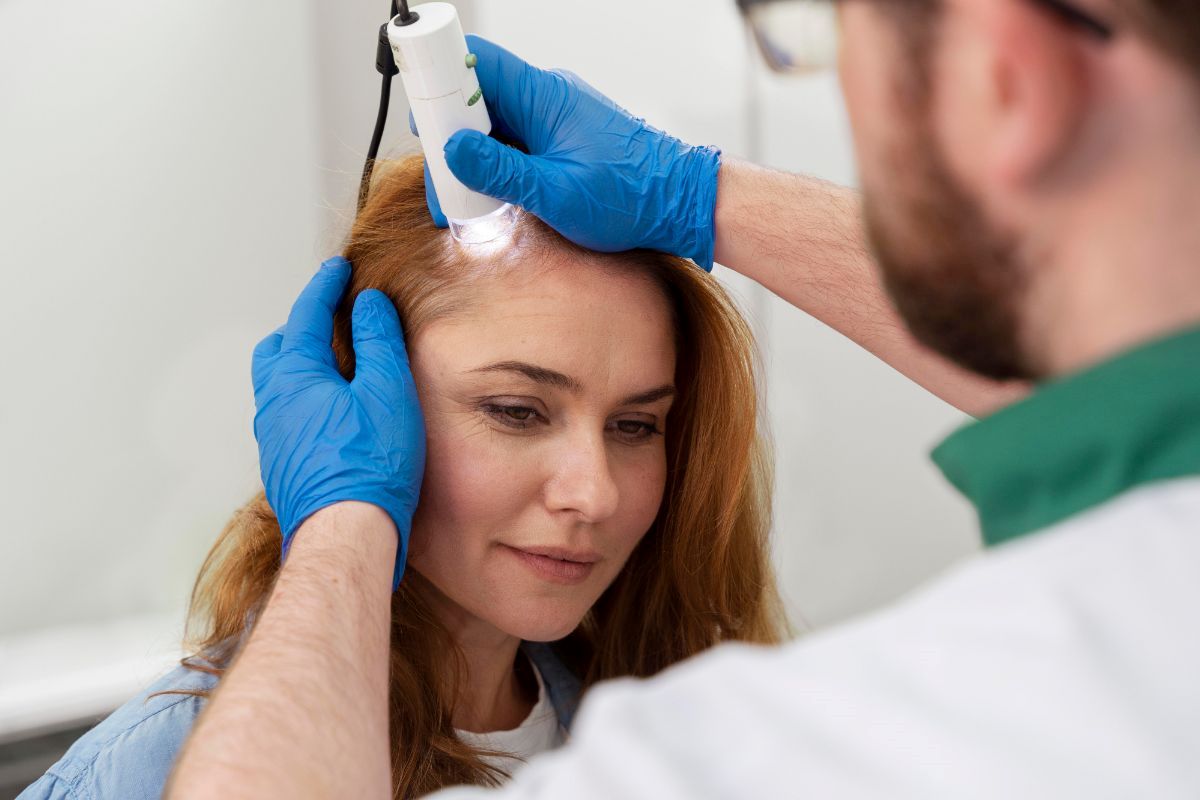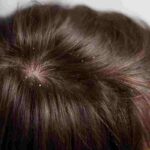Hair loss affects both men and women, but hair transplants for women are a growing field offering practical solutions. While often perceived as a male issue, many women face significant hair thinning and loss. This guide explores the causes of hair loss in women, details the hair transplant procedure, highlights the benefits, and outlines what to expect from the treatment.
Causes of Hair Loss in Women
A multitude of factors can cause hair loss in women. Understanding these causes is the first step in determining whether a hair transplant is appropriate.
Genetic Predisposition
Genetic predisposition is a direct cause of hair loss in women, primarily manifested as androgenetic alopecia. This hereditary condition causes gradual hair thinning, typically starting at the crown and spreading outward. In women, androgenetic alopecia often results in diffuse thinning rather than the more pronounced male-pattern baldness. Understanding this condition is essential for those exploring hair transplants for women, as it affects how hair loss progresses and how treatments can be tailored.
Hormonal Changes
Hormonal changes play a vital role in hair loss among women, mainly through conditions like pregnancy, menopause, and thyroid disorders. During pregnancy, increased estrogen levels prolong the hair growth phase, but postpartum hormonal shifts can lead to excessive hair shedding. Menopause introduces a decrease in estrogen and progesterone levels, often resulting in diffuse hair thinning across the scalp. Thyroid disorders, comprising both hypothyroidism and hyperthyroidism, can disrupt standard hair growth patterns, causing hair to become brittle or fall out. Managing these hormonal fluctuations with appropriate medical treatments can help restore average hair growth.
Medical Conditions
Medical conditions are a significant factor in female hair loss, with diseases such as alopecia areata and polycystic ovary syndrome (PCOS) being common culprits. In autoimmune disorders like alopecia areata, the immune system mistakenly targets the hair follicles, resulting in patchy hair loss. PCOS, a hormonal disorder affecting women’s reproductive health, leads to elevated androgen levels, which can cause thinning hair on the scalp along with other symptoms like irregular menstrual cycles. Addressing these medical conditions through targeted therapies and medications can help manage their impact on hair health.
Medications
Medications can cause hair loss as a negative consequence, with drugs prescribed for conditions such as chemotherapy, antidepressants, and blood pressure medications being notable examples. Chemotherapy targets cancer cells but also affects rapidly dividing hair follicles, leading to temporary hair loss. Antidepressants and antihypertensives may cause hair thinning in some individuals as a less common side effect. Women experiencing hair loss due to medications should consult their healthcare provider to explore alternative treatments or adjust their medication regimen to alleviate these effects.
Stress and Lifestyle Factors
Stress and lifestyle factors are also significant contributors to hair loss in women. Chronic stress triggers telogen effluvium, where many hair follicles enter the resting phase too soon, increasing hair shedding. A poor diet lacking essential nutrients like iron, zinc, and vitamins can also weaken hair follicles and exacerbate hair loss. Rapid weight loss can shock the body & cause temporary hair thinning. Addressing these factors through stress management techniques, dietary improvements, and gradual weight loss strategies can support hair health and prevent further hair loss.
The Hair Transplant Procedure
Understanding the procedure for a hair transplant for women is essential for those considering this treatment. The method includes moving hair follicles from a donor area to the diminishing or balding areas of the scalp.
Follicular Unit Transplantation (FUT)
Follicular Unit Transplantation (FUT), also known as strip surgery, includes removing a strip of scalp from the donor area. This strip is then divided into individual grafts for transplantation. The donor area is stitched up, resulting in a linear scar. FUT is a well-established technique that allows for the harvest of many grafts in a single session, making it suitable for patients requiring comprehensive hair restoration. The linear scar can be concealed by longer hair, but it may be noticeable if the hair is worn very short.
Follicular Unit Extraction (FUE)
Follicular Unit Extraction (FUE) is a less invasive method in which a person’s hair follicles are removed straight from the donor area using a specialized tool and then transplanted into the recipient area. FUE leaves tiny, dot-like scars that are less noticeable than the linear scar from FUT. This technique is favored for its minimally invasive nature and quicker recovery time, making it popular for many women seeking hair restoration.
Benefits of Hair Transplant for Women
Hair transplants offer several significant benefits for women experiencing hair loss. These benefits encompass both physical and emotional aspects of hair restoration.
Natural-Looking Results
Natural-looking results are one of the most significant benefits of a hair transplant for women. Advanced techniques like FUT and FUE are designed to mimic hair’s natural growth patterns. Surgeons focus on creating a hairline that suits the patient’s facial features and matches the existing hair’s density and direction, ensuring that the transplanted hair blends seamlessly with the natural hair.
Permanent Solution
A permanent solution to hair fall is a significant advantage of hair transplants. As opposed to temporary fixes such as wigs or hairpieces, hair transplants address the underlying cause of hair loss by relocating hair follicles from donor areas to thinning or balding spots. The transplanted hair grows naturally over time, offering a durable and long-lasting solution to hair loss. This permanence makes hair transplants a cost-effective choice compared to other temporary treatments.
Improved Self-Esteem and Confidence
Improved self-esteem and confidence are notable psychological benefits of hair transplants. Hair loss can significantly impact a woman’s self-image and confidence. A successful hair transplant can restore a fuller, more natural-looking head of hair, leading to increased self-esteem and a positive self-image. This improvement in appearance can enhance social interactions and overall well-being.
Minimal Downtime
Minimal downtime is another critical benefit of modern hair transplant procedures. Techniques like FUE have made hair transplants less invasive, resulting in a quick recovery. Most patients can resume their daily actions within a few days after the procedure, and the post-operative care is generally straightforward. This minimal downtime allows women to return to regular routines with minimal discomfort and few restrictions.
Versatility of Applications
The versatility of hair transplant applications extends beyond treating scalp hair loss. Hair transplant techniques can be adapted for various cosmetic needs, including eyebrow restoration, eyelash enhancement, and beard transplants. These applications offer tailored solutions for different cosmetic goals, demonstrating the flexibility of hair transplant procedures.
Long-Term Cost Efficiency
Long-term cost efficiency highlights the value of a hair transplant as an enduring remedy for hair loss. Although the initial cost of a hair transplant can be high, it is a one-time expense compared to the ongoing costs of treatments like topical solutions or medications. The lasting effects of a successful hair transplant can lead to savings over time, making it a cost-effective choice for long-term hair restoration.
High Success Rates
High success rates of modern hair transplant techniques ensure that most women will achieve satisfactory results from the procedure. Advances in technology and techniques, such as FUE and Direct Hair Implantation (DHI), have led to high graft survival rates and natural-looking outcomes. Experienced surgeons and refined methods contribute to the effectiveness of hair transplants, offering a reliable solution for hair restoration.
What to Expect During and After the Procedure
Understanding what to expect during and after a hair transplant can help women prepare for treatment and recovery.
Pre-Procedure Preparation
Pre-procedure preparation involves a thorough consultation with the surgeon to discuss expectations, examine the scalp, and plan the transplant. The surgeon may recommend specific instructions, such as avoiding smoking and certain medications. This preparation helps ensure that the procedure is successful and that the patient is fully informed.
The Procedure
The procedure for hair transplant for women typically lasts several hours. Local anesthesia is used to numb the scalp, and the surgeon carefully transplants hair follicles to the recipient area, focusing on creating a natural-looking hairline. The procedure is done in a clinical setting, and patients are awake during the surgery.
Post-Procedure Care
Post-procedure care involves managing mild swelling and discomfort, which usually subside within a few days. Patients are suggested to follow post-operative instructions, which include gentle scalp washing, avoiding strenuous activities, and protecting the scalp from sunlight. Proper care is crucial for achieving the best results from the transplant.
Results
Results from a hair transplant become visible over time, with new hair growth observable within a few months and significant improvement seen between six months to a year after the procedure. The transplanted hair will grow naturally, allowing patients to treat it like normal hair.
Considerations Before Undergoing a Hair Transplant
Several factors must be considered before deciding on a hair transplant to ensure it is the right choice.
Candidacy
A qualified surgeon evaluates candidates for a hair transplant. Not all women with hair loss are suitable candidates, especially those with diffuse thinning or insufficient donor hair. A comprehensive assessment helps determine whether a hair transplant is a viable option.
Cost
Cost is essential for hair transplant procedures, ranging from a few thousand to tens of thousands of dollars. It is crucial to assess the financial aspect and ensure that the procedure fits within your budget, considering the initial investment and potential long-term savings.
Realistic Expectations
Realistic expectations are essential for achieving a hair transplant. While the procedure can significantly improve hair appearance, more is needed to accomplish the total density of natural hair. Understanding the expected outcomes helps ensure satisfaction with the results.
Potential Risks and Complications
Potential risks and complications connected with hair transplants include infection, scarring, and unnatural-looking results. Choosing a highly experienced surgeon and following post-operative care instructions can minimize these risks and contribute to a successful outcome.
Post-Surgery Commitment
Post-surgery commitment involves adhering to the surgeon’s instructions and attending follow-up appointments. This commitment is necessary for achieving the best results from the procedure and ensuring the health and growth of the transplanted hair.
Choosing the Right Surgeon
Selecting a qualified and expert hair transplant surgeon is crucial for achieving the best results. Consider the following when choosing a surgeon:
- Credentials and Experience: Ensure the surgeon is board-certified and has a proven track record in hair transplantation. Look for membership in professional organizations, such as the International Society of Hair Restoration Surgery (ISHRS).
- Patient Reviews and Testimonials: Look for positive feedback from previous patients. Online reviews & testimonials can offer insight into the surgeon’s skill and patient satisfaction.
- Before and After Photos: Reviewing the surgeon’s portfolio can provide insight into their skill and the expected outcomes. Pay attention to the naturalness of the results and the density of the transplanted hair.
Conclusion
Hair transplants for women are a viable & effective solution for those struggling with hair loss. By comprehending the causes of hair loss, the details of the hair transplant procedure, the benefits, and what to expect, women can make informed decisions about their hair restoration options. Consulting with a specialist to explore your options and determine the best course of action is crucial to achieving a fuller, more natural-looking head of hair.

















